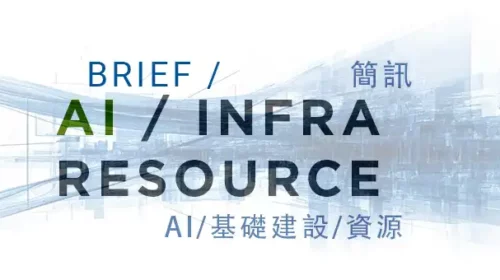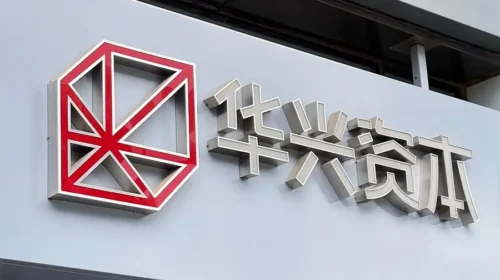Hope Education scraps stalled acquisition – but is that good or bad?

Shares of China’s second largest vocational educator were largely unchanged after it terminated an asset shuffle between two subsidiaries with no explanation
Key Takeaways:
- Hope Education terminated a nearly 2-year-old internal asset shuffle with no explanation
- Despite benefiting from supportive government policies, the vocational educator and its peers suffer from lack of investor interest
By Edith Terry
On July 24, investors barely reacted when vocational education giant Hope Education Group Co. Ltd. (1765.HK) announced the termination of an asset swap between two of its related entities. That may be partly because the deal, first announced in December 2021, involved a web of connected companies, making it hard to figure out who won and who lost with the collapse. Such dealings between related companies are all too common in China, where controlling stakeholders often play such shell games behind the scenes by moving assets between their various holdings.
The original agreement between Sichuan Hope and Tequ Linjia involved the purchase of a school called Shuanglin Education, based in Eastern China’s Jiangxi province, for 50 million yuan ($7 million). As part of the deal, Sichuan Hope was supposed to provide a 181.6 million yuan loan for the purchase of 400 mu (266,680 square meters) of land for the school.
No reason was given for the deal’s collapse, though the extended period before the final termination means someone probably wasn’t happy with some of the terms.
Investors have every right to be confused. The two entities involved in the transaction are associated with two of Hope Education’s major shareholders, who apparently didn’t see eye-to-eye on terms of the deal. Sichuan Hope is tied to Hope Education’s founder, Wang Huiwu. Meantime, Tequ Linjia, is tied to New Hope Liuhe (000876.SZ), one of China’s largest private animal feed companies that later expanded into other businesses.
This story has its roots in the legendary tale of four brothers from Sichuan province who were so poor that one, Liu Yongmei, was given away for adoption and now uses the name Chen Yuxin. The four began as chicken and quail farmers, before moving into the animal feed business. In 1995, the four split their businesses into East Hope, West Hope, Continental Hope and New Hope.
Separately, Wang Huiwu helped to co-found Hope Education in 2005. Two years later he brought in Chen Yuxin and West Hope as investors in 2007, hoping to leverage on the Hope brand name. After that, Wang held 49% of Hope Education through his Sichuan Hope, while Chen and West Hope held the majority 51% through Sichuan Tequ.
The company made a HK$3.2 billion ($410 million) IPO in Hong Kong in August 2018, bringing in conglomerate China Everbright (0165.HK) as an investor by selling it a 12.8% stake. The company was hoping to entice investors with its growth story in China’s vocational education sector, where Beijing has been encouraging private investment to help train up young people with such practical skills as cooking and computer maintenance.
But investors haven’t bought into the story. The stock initially rose as much as 70% in its first three years as a public company, but has lost all that and more since then. At its latest close the shares now trade more than 70% below their IPO price.
The lack of enthusiasm may owe partly to murky moves like the recent mysterious asset shuffle and its termination. Hope Education’s shares were unchanged the day after the deal’s termination was announced, suggesting investors had possibly already lost hope after the deal had still failed to close more than a year and a half after first being announced. Then again, perhaps they simply didn’t understand if the termination was good or bad news for the company.
Growth through acquisitions
The deal is just one of many that have helped Hope Education to grow, and fueled some of the earlier enthusiasm toward the stock. The shares reached their all-time high in early 2021, after the company purchased a technical training school with 7,500 students in the Jiangxi city of Gongqing for 500 million yuan. A year earlier in March 2020, Hope Education announced plans to pay $140 million for 62% of Inti Education Holdings in Malaysia, exciting investors with the potential for global expansion.
The company’s base remains in Sichuan province, where it has 10 schools. But it has also expanded into East China with four schools, including the one Gongqing, and has three schools in North China, as well as one each in South and Central China. In addition to Malaysia, Hope Education also has overseas schools in Thailand and Hungary.
The company’s financials also look solid enough. Its student body totaled 280,453 at the end of February, the end of the first half of its latest fiscal year, which was up 20% from the previous year. Its revenues for the six-month period also rose by a healthy 26.7% year-on-year to 1.9 billion yuan. Its net profit fell slightly from the previous year’s level to 428 million yuan, but the figure actually rose 33% on an adjusted basis, which excludes expenses like employee stock compensation.
With a modest price-to-earnings (P/E) ratio of 9, Hope Education isn’t alone in failing to win over investors. China Education Group Holdings (0839.HK) trades at a similarly modest P/E of about 9, while Minsheng Education Group’s (1569.HK) trades at a far lower 2.
Why so little love for China’s vocational education industry? Like its peers, Hope Education’s business is clearly aligned with government policy to rebalance the educational sector towards vocational training, both to mop up unemployed youth and to develop skills needed for the high-tech industries China hopes to promote.
That policy was amplified last December with new guidelines on “deepening the development and reforms of modern vocational educational systems.” Beijing may be pushing such vocational training to reorient millions of China’s unemployed youth who are having difficulty finding jobs after attending conventional colleges.
Vocational educators like Hope tend to suffer from an image problem in the student community, since many such students see vocational education as a second-choice to traditional universities, limiting their interest in attending such schools. Perhaps some of that negative association has spilled over to the investment community.
Some investors may also incorrectly assume that Hope and other vocational educators are vulnerable to fallout from China’s high-profile education crackdown of two years ago, which overnight nearly wiped out an entire group of companies focused on after-school tutoring in core curriculum areas for K-12 students. But the two areas are quite separate, and the vocational educators have repeatedly emphasized they are actually benefitting from – and not being clobbered by – recent government policy.
Murky dealings like the one that Hope just scrapped could also be partly to blame for the lack of investor enthusiasm. At the end of the day, what’s probably needed is more education all around – for investors on the unique positioning of this group of companies, and for school operators on how to operate more transparently.
Have a great investment idea but don’t know how to spread the word? We can help! Contact us for more details.
To subscribe to Bamboo Works weekly free newsletter, click here






